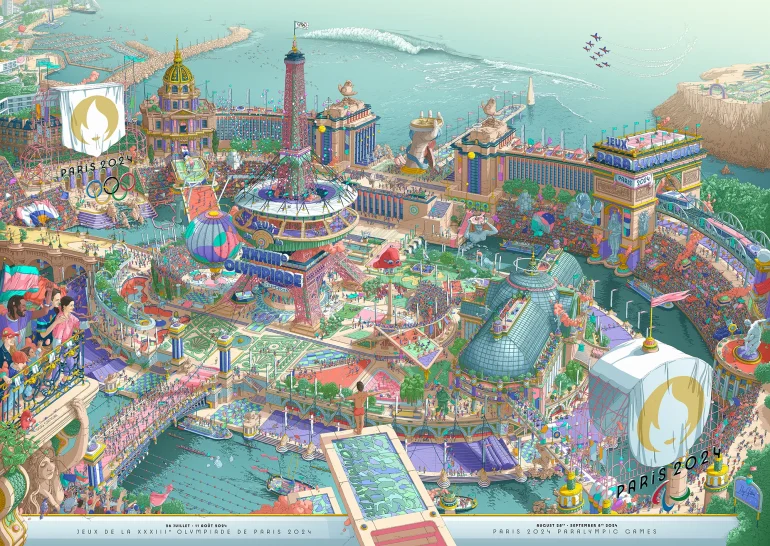The Paris 2024 Olympics have begun. Even if you haven’t seen the official poster, you are likely aware of this major event. In the digital age, some might think that the games no longer need extensive advertising. However, Olympic posters have always played a crucial role in promoting this global event. Even today, no Olympic advertising campaign is complete without a poster. These posters not only link art and sport but also showcase the cultural significance of the host city.lttake a look at 10 Olympic posters from the past 100 years. Stay with us.
1. Los Angeles 1932 Olympic Poster
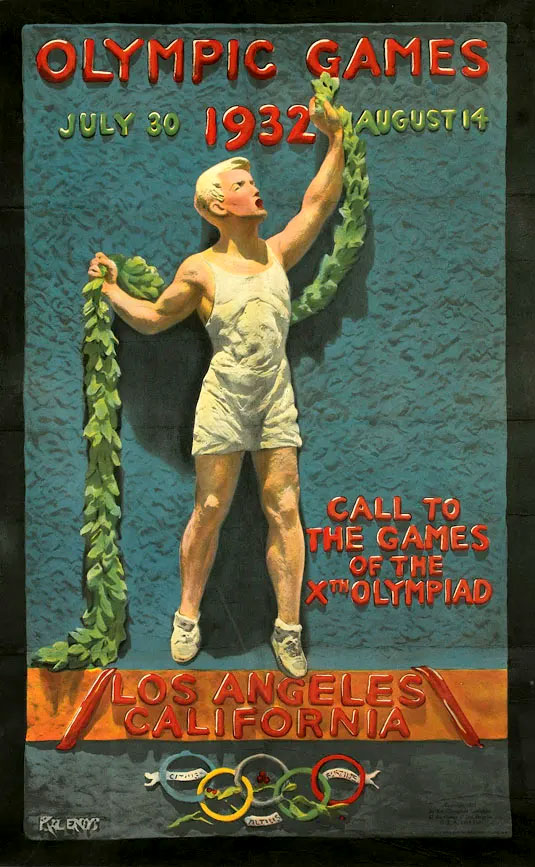
This poster was the first to feature the Olympic rings. Julio Kilenyi designed it, depicting a Greek athlete arriving at Olympia and requesting a truce for the games.
2. Berlin 1936 Olympic Poster
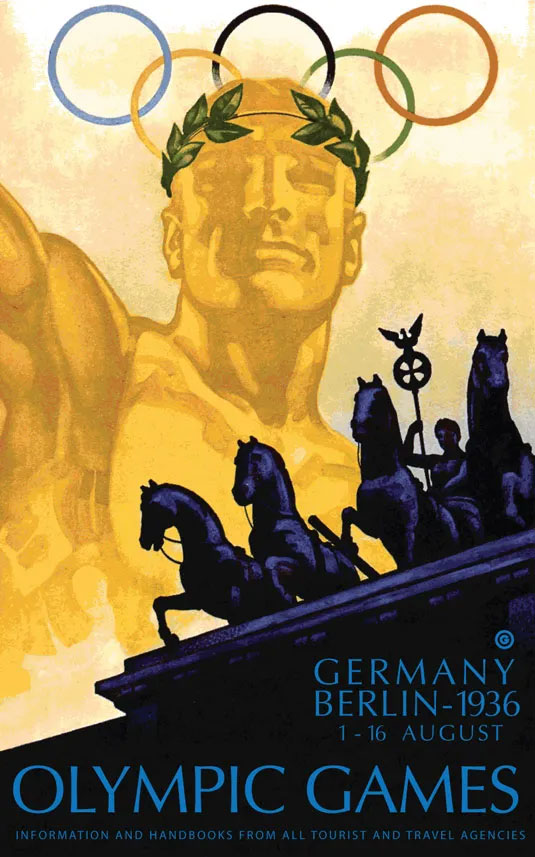
The use of the Olympics for propaganda peaked in 1936 when Adolf Hitler tried to use the Berlin Games to promote Nazi ideology. The dramatic poster for this event, designed by Franz Würbel, pleased Hitler. It showcases one of Berlin’s most famous landmarks with an emphasis on classicism.
3. Tokyo 1964 Olympic Poster
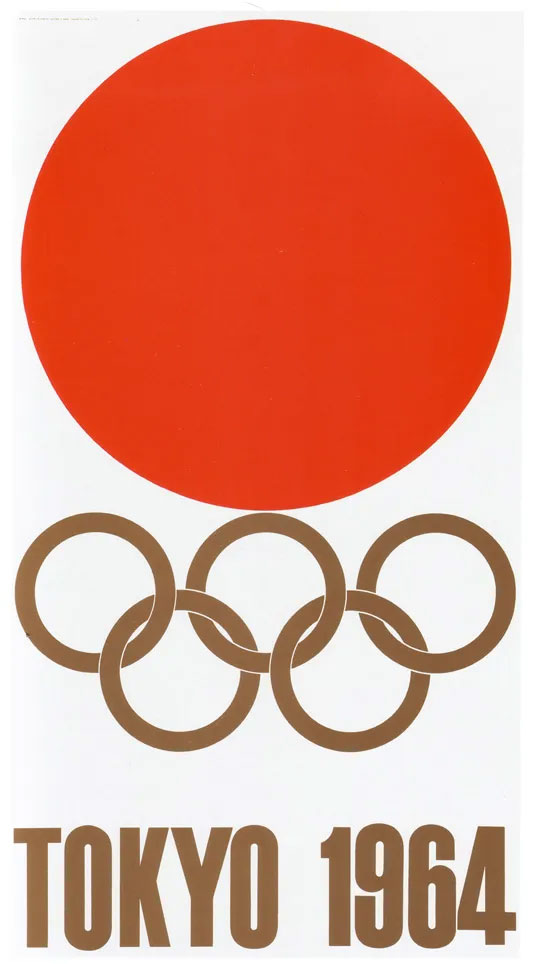
Although four posters were commissioned for the Tokyo 1964 Olympics, the simple combination of the sun symbol and the golden Olympic rings was impactful. It served as a great advertisement for a rising nation. Yusaku Kamekura created three other posters featuring photographs of athletes, but this iconic poster received international acclaim.
4. Mexico 1968 Olympic Poster
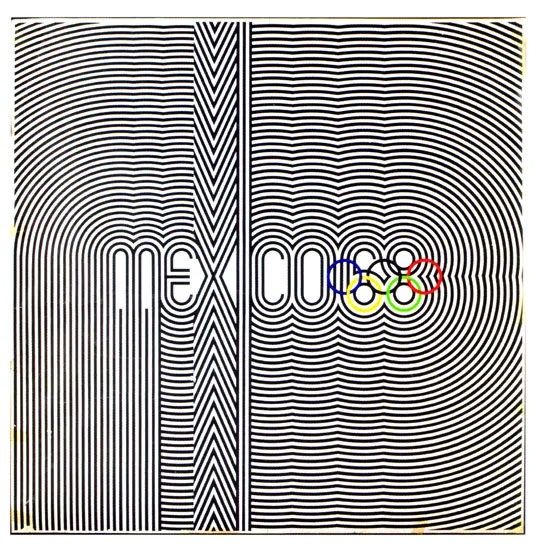
This poster is one of the most memorable and graphically impactful Olympic posters to date. It evokes traditional Mexican cultural forms without resorting to clichés. Pedro Ramírez Vázquez, Eduardo Terrazas, and Lance Wyman designed it, also responsible for the Mexico 68 logo.
5. Munich 1972 Olympic Poster
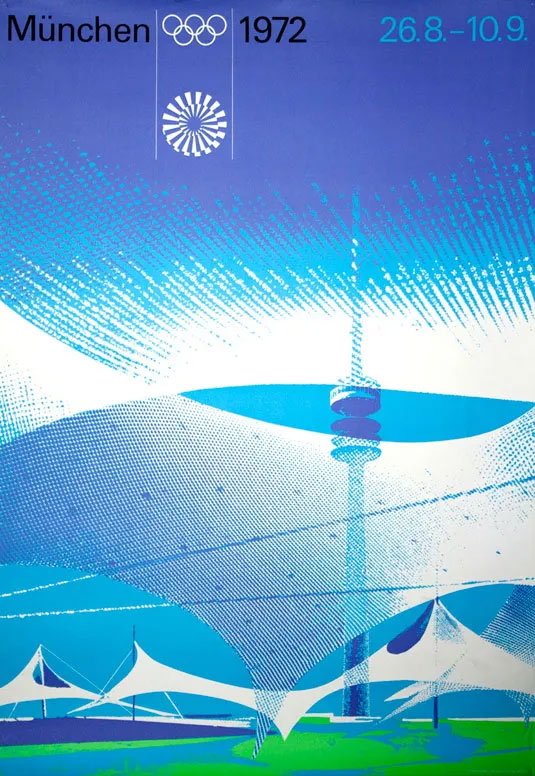
No one could predict the tragic events of the 1972 Munich Games. Before the Munich massacre, Germany hoped the 1972 Olympics would showcase the country to a global audience post-World War II. The opening ceremony, called “The Peaceful Games,” was the most spectacular ever held. Otl Aicher, the designer of much of Munich’s program, created extraordinary graphic posters and globally recognized sport pictograms for the event.
6. Montreal 1976 Olympic Poster
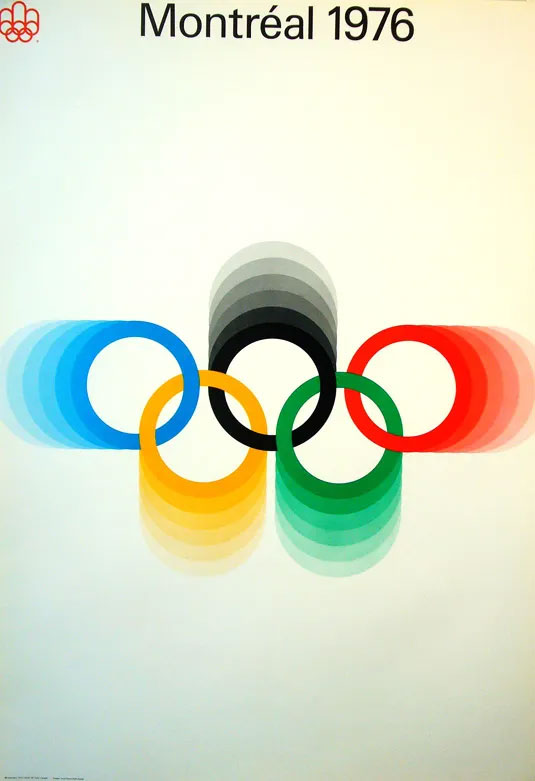
Ernst Roch designed the official poster for the 1976 Games. It featured the logo in the upper left corner with colorful Olympic rings reflecting from the middle. Georges Huel and Pierre-Yves Pelletier created equally good designs for brochures and guides that accompanied the poster.
7. Moscow 1980 Olympic Poster
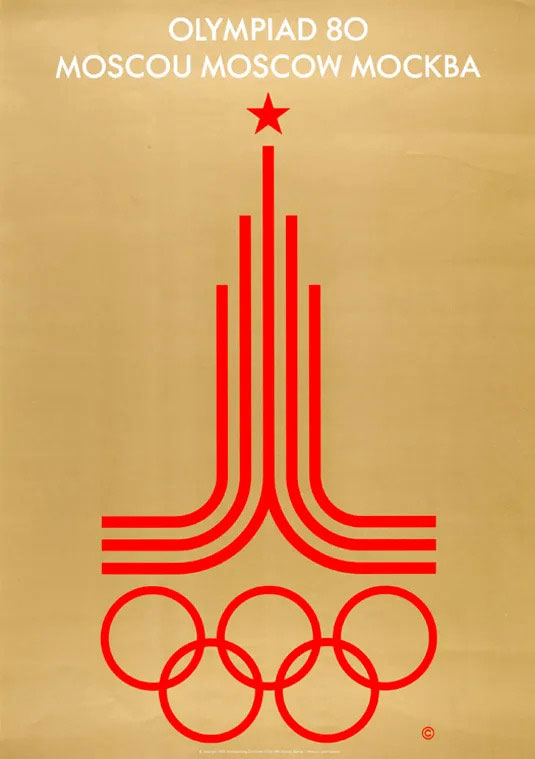
Vladimir Arsentyev designed this poster, which features two running tracks merging to form a structure/flame topped by a red star, symbolizing the Soviet Union. The limited colors, symmetry, and strong design make this a standout poster.
8. Los Angeles 1984 Olympic Poster
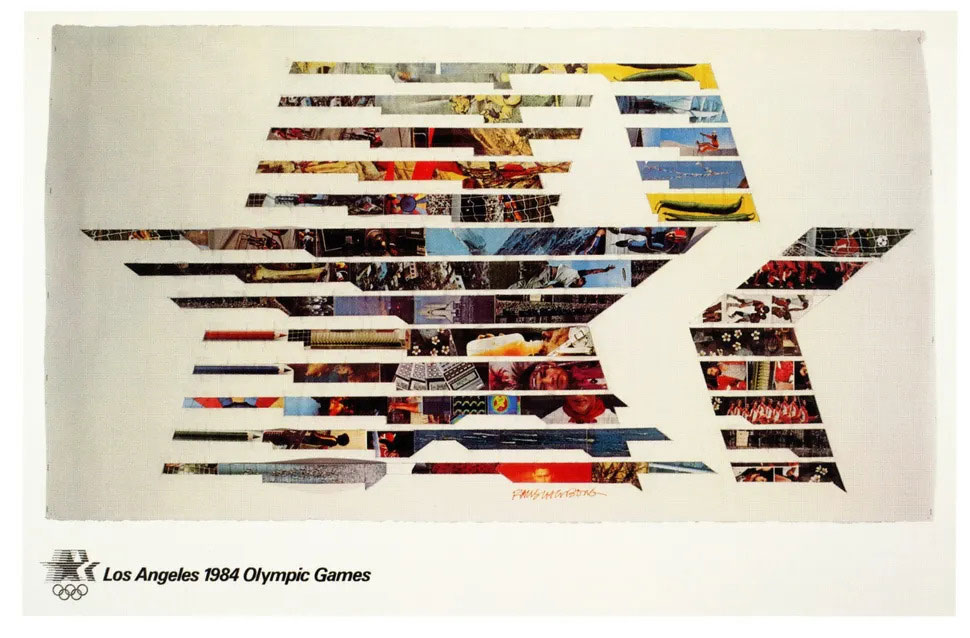
When Los Angeles hosted the Games again in 1984, many great artists submitted designs, including David Hockney, Roy Lichtenstein, Linda Benglis, and John Baldessari. Ultimately, a photomontage by Robert Rauschenberg was chosen as the official poster. It uses the event’s star logo and incorporates speed lines with photos of sports actions and scenes from everyday life, linking sports to 20th-century life.
9. London 2012 Olympic Poster
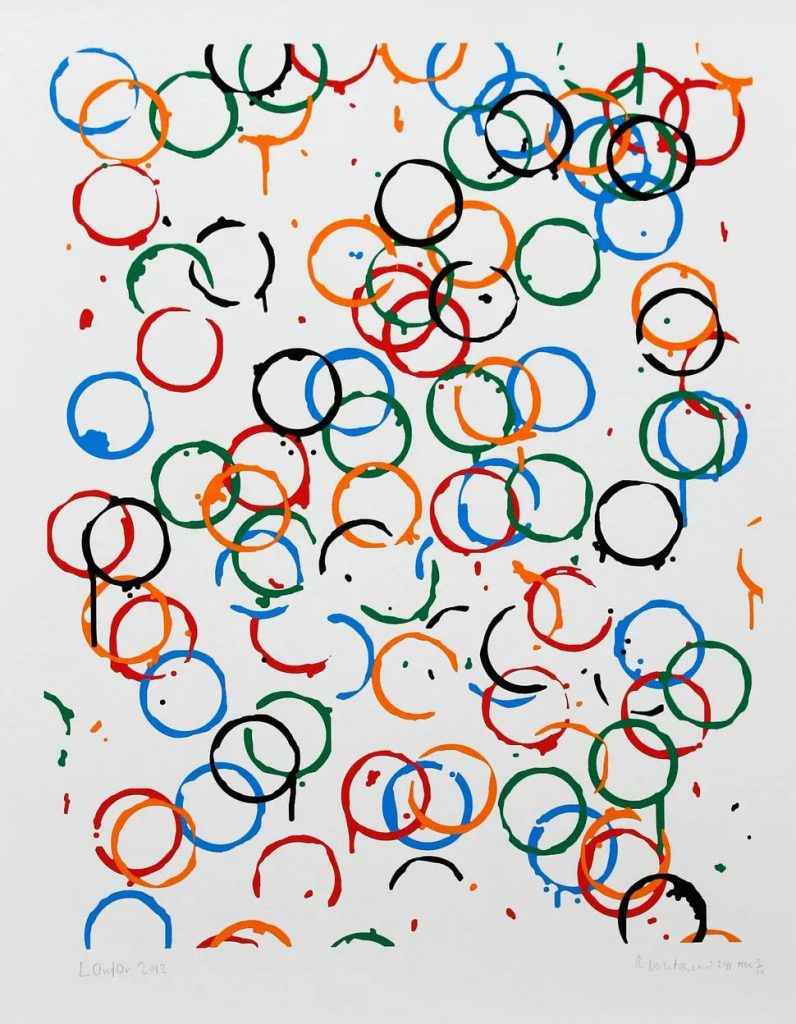
How much things have changed in 100 years! A century after the first Olympic poster, the 2012 London design was much more abstract. It featured no athletes, yet conveyed a similar message differently. Some of Britain’s most famous artists, including Tracey Emin, Bridget Riley, Chris Ofili, and Howard Hodgkin, were invited to propose designs for the official poster. Rachel Whiteread’s colorful and abstract play on the Olympic rings won. It highlights their role as symbols of unity and inclusiveness, designed to look like tea cup stains, a subtler nod to patriotism.
10. Paris 2024 Olympic Poster
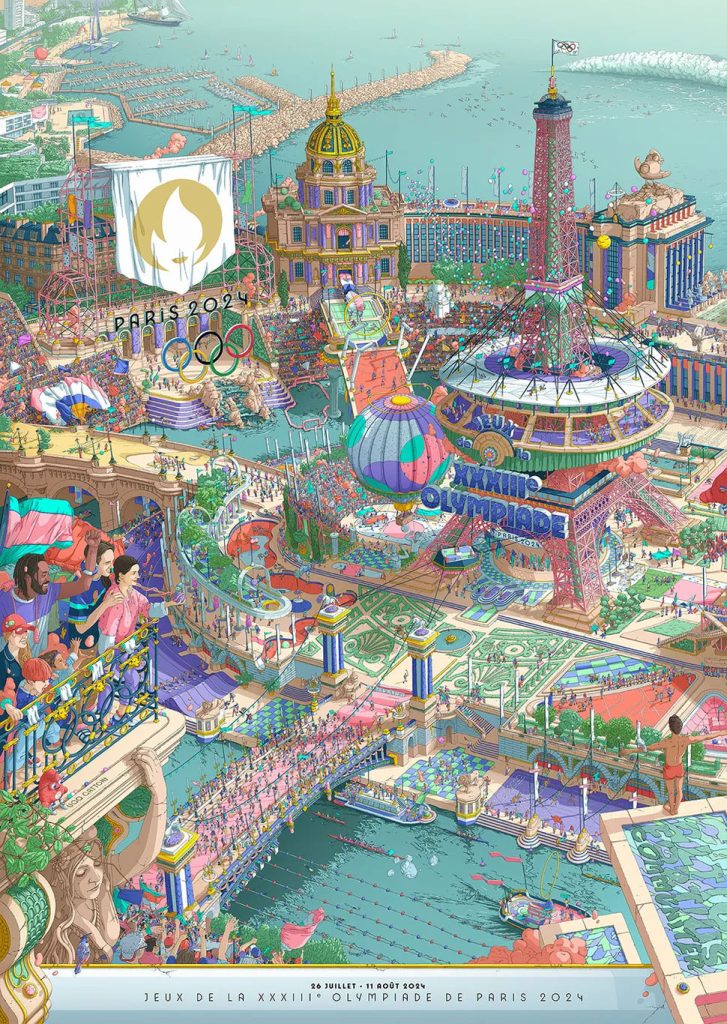
French artist Ugo Gattoni designed this poster. It depicts a “fantasy city” with stunning detail inside a stadium, combining famous Paris landmarks with Olympic symbols like medals, rings, and the Olympic flame.
These posters reflect the history and evolution of the Olympic Games over the years. Each tells a unique story of the culture and art of its time. By looking at these posters, one can appreciate the importance of art in promoting this great sporting event. If interested, you can view all the Olympic posters designed from the beginning to today at this link.

